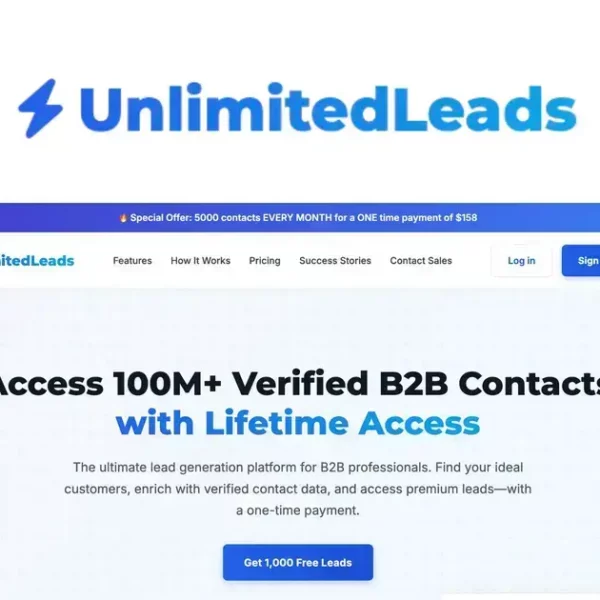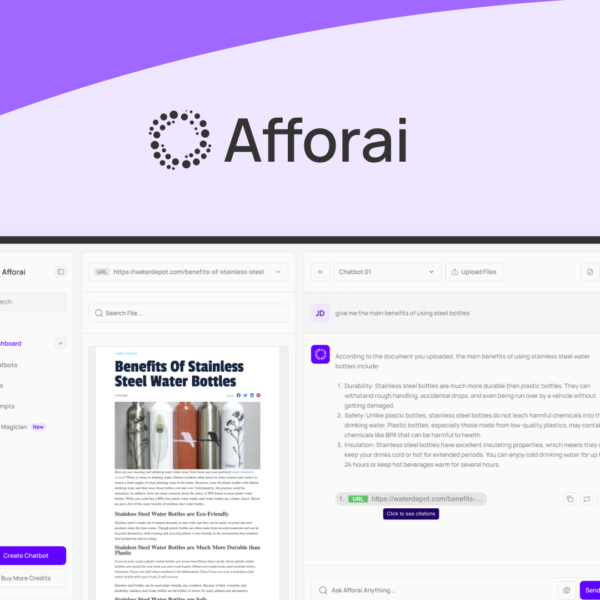SaaS products can revolutionize your business, but choosing the right lifetime deal requires careful consideration. Follow these tips to make an informed purchase!
Do Your Homework on the Developer and the Company
When considering a SaaS product, it’s super important to do your homework on both the developer and the company behind it. This means understanding who they are and their reputation in the industry. Can you find reliable information about them? Check out their website, social media, and online reviews.
Why Company Reputation Matters
A solid reputation can give you confidence. You want to invest in a company that is known for delivering quality and support. Look for feedback from other users. Have they had good experiences? Do they feel the company cares about its customers?
Assessing the Developer’s Background
Also, take a closer look at the developer’s background. What kind of experience do they have? A team with a strong track record has a better chance of creating a product that meets your needs. Pay attention to their previous projects and how successful they have been.
Transparency is Key
Transparency is another critical point. A trustworthy company will share its mission, values, and how they handle customer data. Look for clear information about their product updates and customer support. You want to know that you can reach out for help when needed.
Checking for Long-term Viability
Finally, consider the company’s long-term viability. Are they stable? Check their funding history and recent news articles. You don’t want to invest in a product that might not last long. A stable company is more likely to provide continued updates and support.
Check what Features Have Been Rolled Out Recently

When you’re considering a SaaS tool, you should check what features have been rolled out recently. This is important because new features can enhance your experience significantly. You want tools that keep up with the latest trends and user needs.
Latest Features Matter
New features can save you time and improve efficiency. For example, a recent update might streamline workflows or add new integrations. These changes often mean the tool is evolving in a good way.
Stay Updated on Release Notes
Always review the release notes. These notes tell you what’s new and what’s improved. Companies usually post them on their websites or in their apps. Reading these helps you understand how the tool is progressing.
User Feedback on New Features
Also, pay attention to user feedback about these new features. Are users finding them helpful? Look for reviews or forum discussions. This feedback can provide insight into whether the updates truly benefit users.
Impact on Your Needs
Finally, consider how these new features meet your needs. Will they help you solve current challenges? If a feature seems promising, ask yourself if it can fit into your workflow. A good feature should make your tasks easier, not harder.
Look at Their Roadmap
When evaluating a SaaS product, you should definitely look at their roadmap. A product roadmap shows what the company plans to do in the future. This gives you an idea of how the product will grow and improve over time.
Understanding the Roadmap
A helpful roadmap outlines upcoming features and improvements. It should include timelines for when these updates will happen. By knowing what’s next, you can better decide if this tool fits your needs.
Long-term Vision
A clear roadmap suggests the company has a long-term vision. This is important because it means they are invested in making their product better. A company that cares about future updates is more likely to provide good service.
Connection to Current Features
Look for connections between the roadmap and current features. If a new feature is coming, will it work well with what’s already available? This can help ensure you won’t face compatibility issues down the line.
User Feedback and Updates
Check if the company considers user feedback when planning their roadmap. This shows they value customer input and are willing to adapt. A company that listens to its users will likely create a more user-friendly product.
Regular Updates
Finally, regular roadmap updates are a good sign. They indicate that the company is actively working on improvements. It’s a great way for you to stay informed about what’s happening.
Chat with Their Support

Before investing in a SaaS tool, it’s smart to chat with their support. Having a direct conversation can tell you a lot about the company. Are they helpful? Do they respond quickly? These factors matter when you need assistance later.
Importance of Customer Support
Good customer support is a sign of a reliable company. You want to know there’s a team ready to help you when issues come up. This could save you time and frustration.
Testing Response Times
When you reach out, note how fast they reply. A quick response shows they care about their users. If you wait too long for an answer, it might be a red flag.
Ask About Common Issues
Prepare questions about common issues users face. This can help you understand how the support team handles problems. If they provide clear solutions, it’s a good sign of effective support.
Assessing Communication Style
Pay attention to their communication style. Are they friendly and easy to talk to? This matters since you’ll need to work with them if issues occur. A positive interaction can give you more confidence in their service.
Availability of Support
Check their support hours. Some companies offer 24/7 support, which is great for urgent issues. Others may have limited hours, which could affect your ability to get help.
Decide Whether the Product Fills a Current or Upcoming Need
It’s crucial to decide whether the product fills a current or upcoming need. This decision impacts how useful the tool will be for you. If it addresses an immediate need, it can help you now. But if it’s only for future use, you might want to think twice.
Assessing Current Needs
Start by evaluating your current challenges. What problems do you face every day? If the product solves these issues, it becomes an important asset. Think about how much time you waste doing things manually.
Identifying Future Needs
Now, consider your upcoming needs. Are there projects on the horizon that require new tools? If you see potential growth or changes in your business, the product might help you adapt better.
Aligning Features with Needs
Check if the features of the product align with your needs. Does it support your goals? A tool with features that match your requirements will be much more valuable. You want to make sure it really helps.
Cost vs. Benefit
Also, think about cost versus benefit. If the product meets a current need, the investment makes sense. However, if it’s only for future use, weigh whether the cost justifies the potential benefits. You don’t want to waste money on something you might not need.
Flexibility for Growth
Finally, consider if the product can grow with you. Some tools offer flexibility to adapt as your needs change. A tool that can evolve with your business will remain valuable over time.




